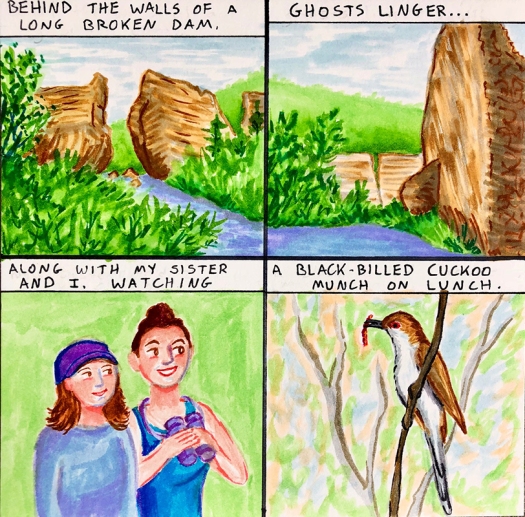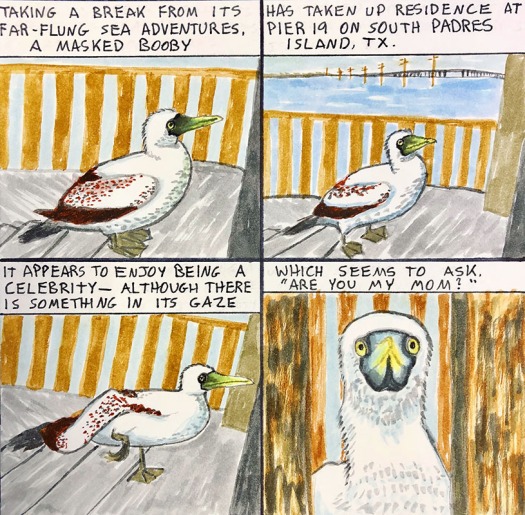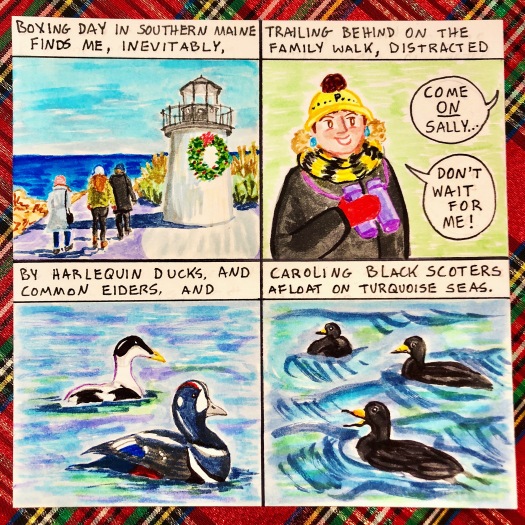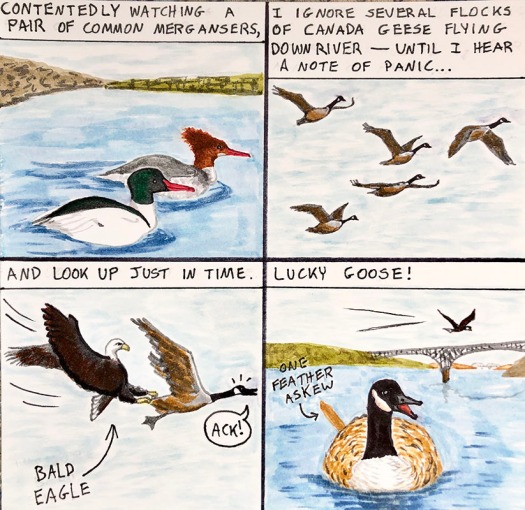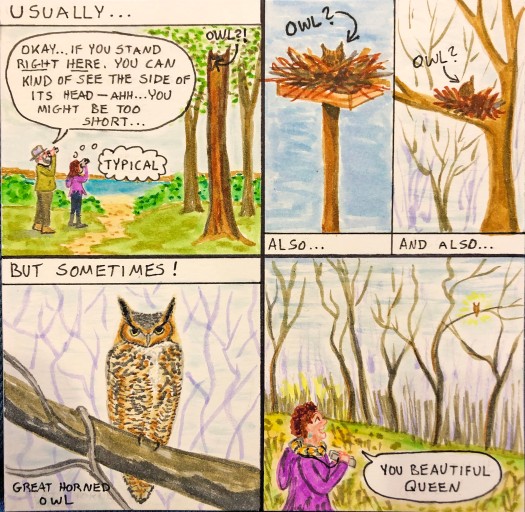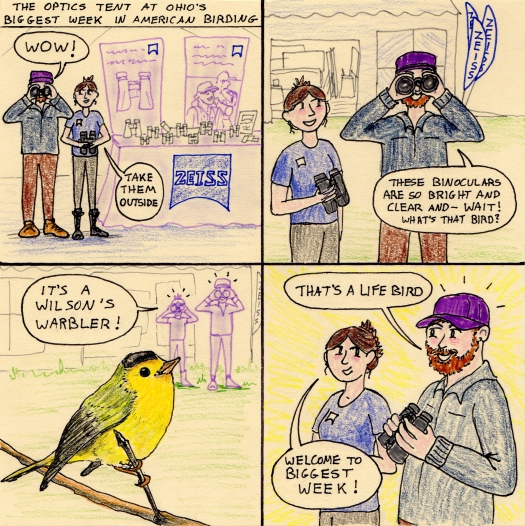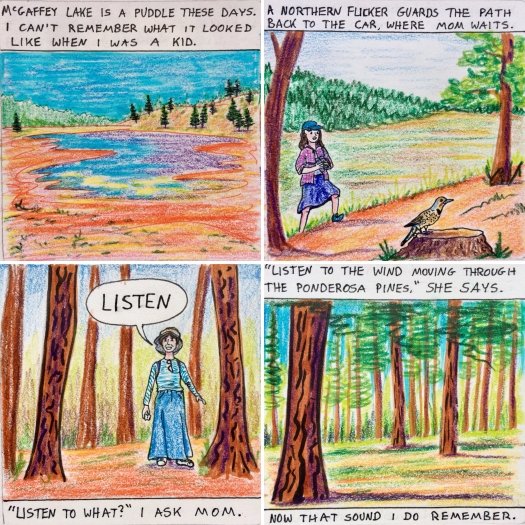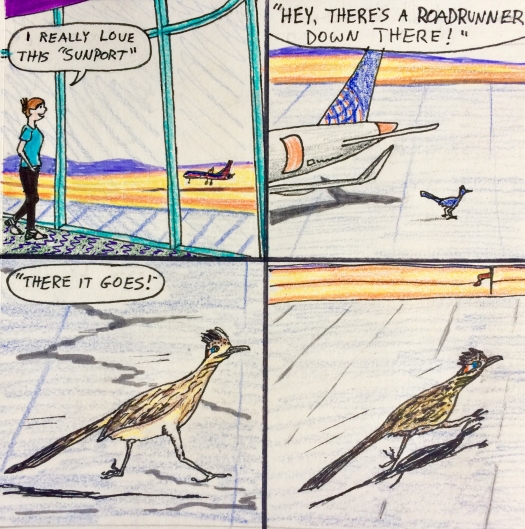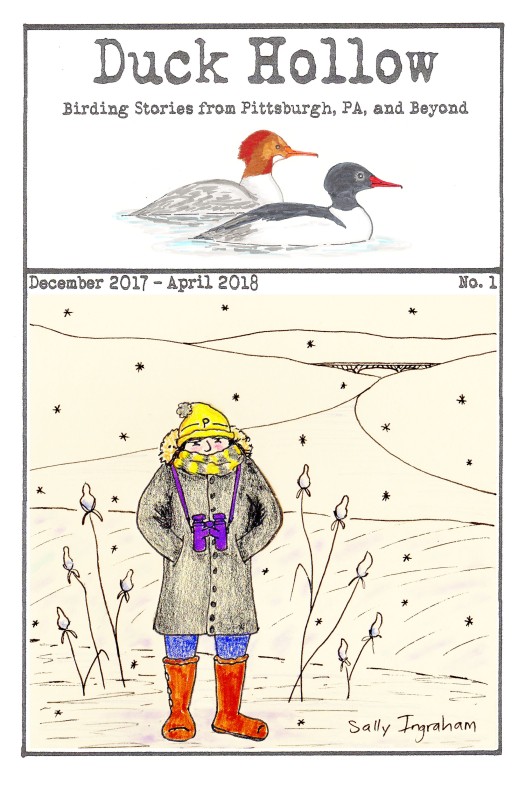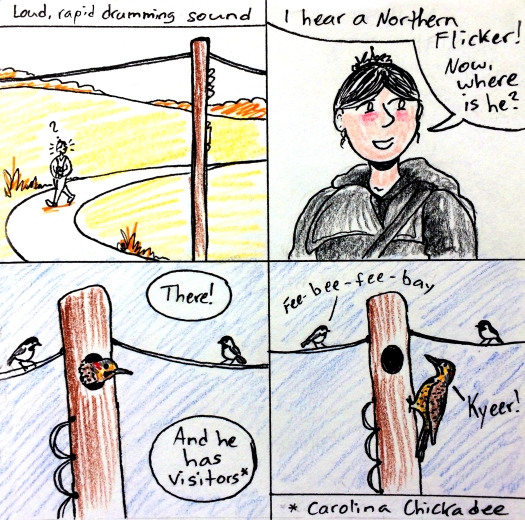(A presentation given at San Diego Bird Festival, March 2019)
My name is Sally Ingraham. I watch birds and play outside and draw comics. I’m a Naturalist Cartoonist.
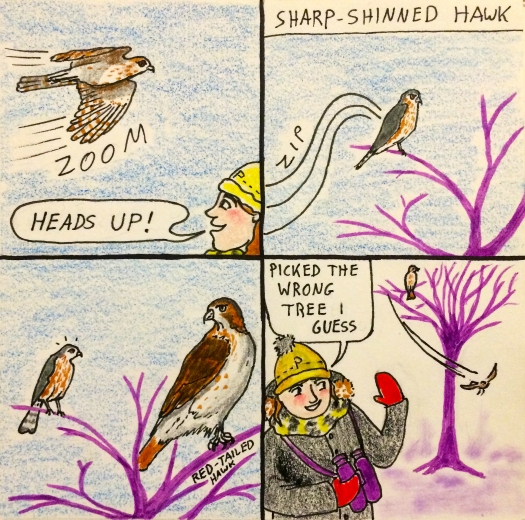
This is a true story, based on something I witnessed during a walk in Frick Park, in Pittsburgh, PA, last year. It is a good example of the type of “research” I am doing, as a Naturalist Cartoonist. A Naturalist is a type of biologist who studies the relationships between living species and their environments. A Cartoonist is a type of artist who conveys meaning using words and images in a deliberate sequence.

In four panels, this comic strip captures time and space, the environment of Magee Marsh in Ohio, and the specific relationship between me, the marsh, a bullfrog, and a Sora Rail.
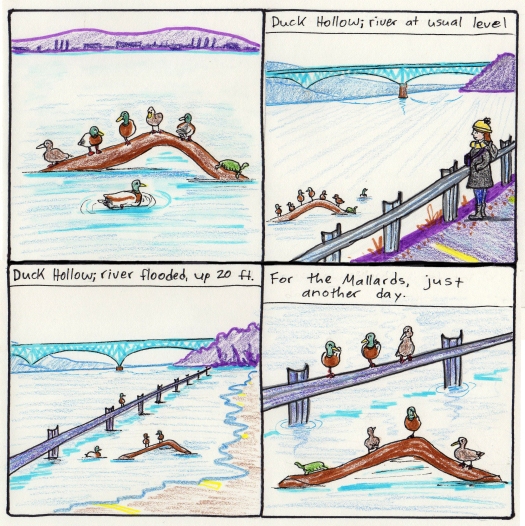
My core of my work is observation in the field. I spend as much time as possible outside in nature – birding, hiking, taking notes, taking photographs, looking at the world, and collecting stories. Then I compile everything for analysis…in the form of a comic.

Comics may seem worlds apart from scientific research, and the form struggles to find acceptance as “real” art, too. When I say “comics” each of you might be thinking of something different. Maybe Archie…
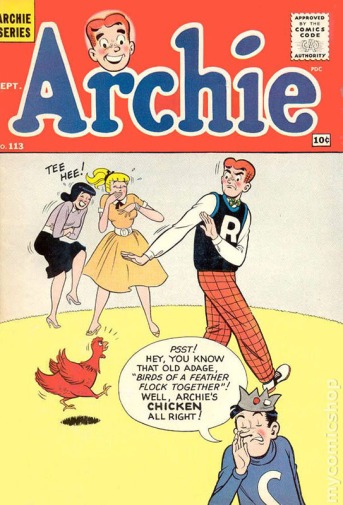
Or Spider-Man…
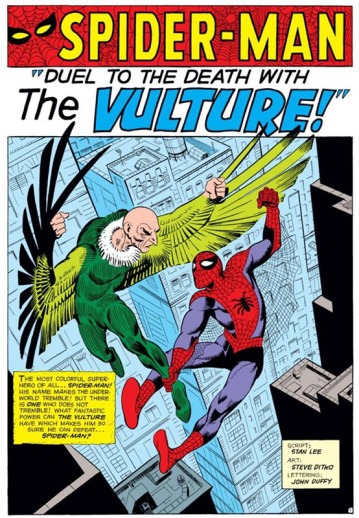
Or Calvin and Hobbs…
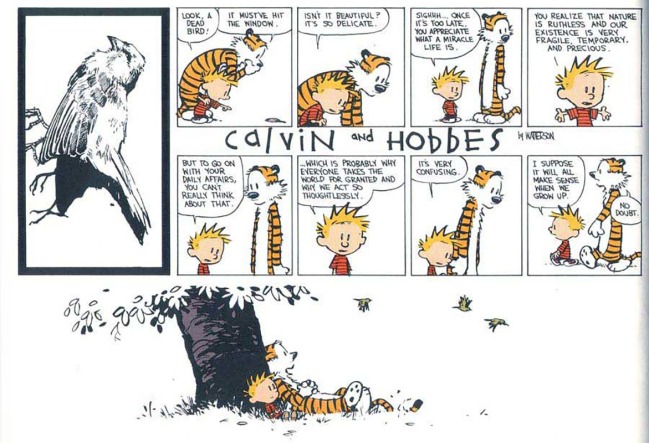
Or this graphic novel about Audubon…
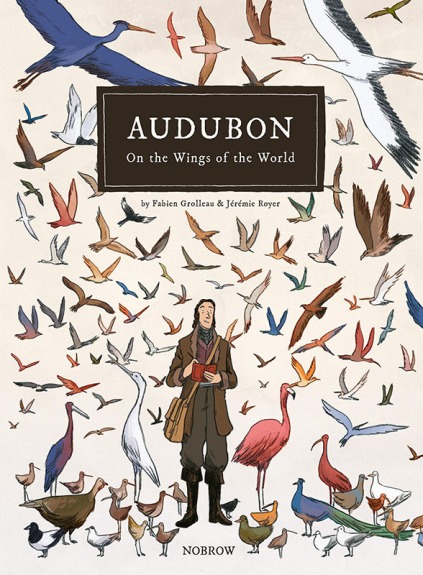
And you might think that comics are a new format, one that has only really developed since the late 19thcentury, when newspaper comic strips like The Yellow Kid first showed up.
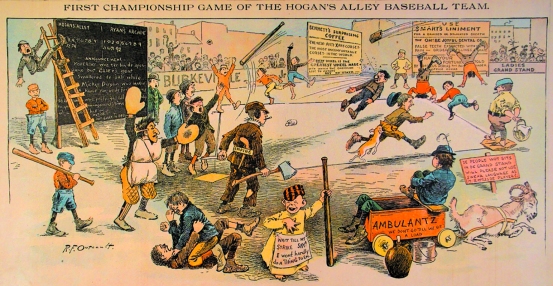
However, comics have been around since the cave paintings…
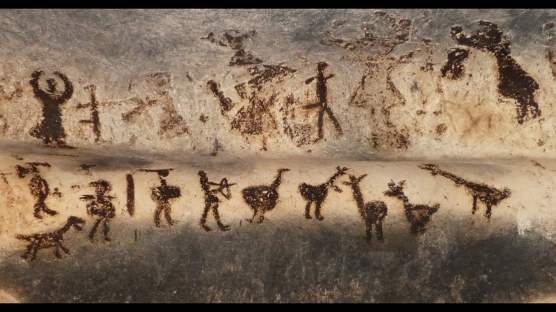
…when humans used images to share experiences that they didn’t have words for. Storytelling through a sequence of pictures.
You can argue that the Bayeux Tapestry, which was made sometime before 1476, is a comic.
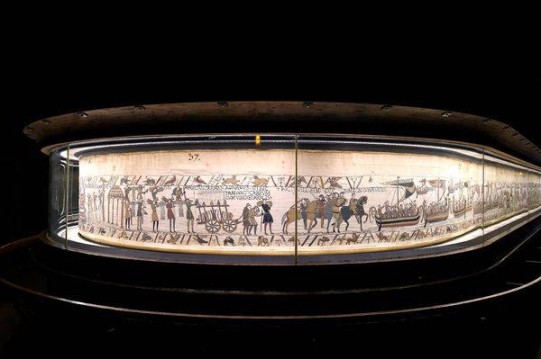
And Giotto’s fresco cycle in the Scrovegni Chapel, completed in 1305, is definitely a comic.
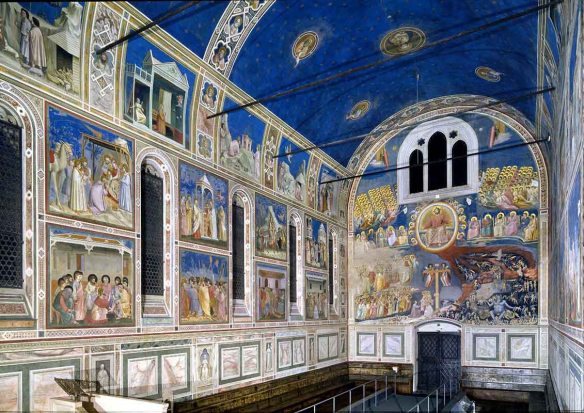
Sequential art, comic books, newspaper strips, editorial cartoons, and graphic novels, are all what I call comics. And comics are this transformative format which allows us to use a visual language, in addition to text, to analyze and understand and share the vast amount of data that all of our senses take in constantly.
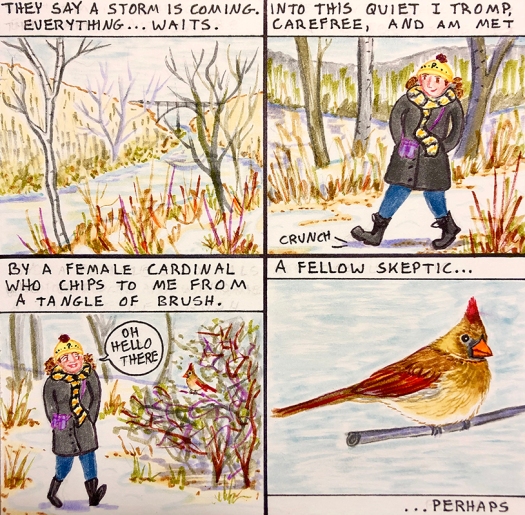
I assume everyone here is a birder, or someone who appreciates and spends time in nature. Birding and nature-watching are really sense-based experiences. When you go birding you’re doing this really important thing, which is learning to trust your senses again. Going back to Plato, there’s this idea of distrusting perception, of thinking being the proof that you exist, and words being the only proper way to convey thought. When you bird, you have to rely on sight and sound and even touch, and you get away from this thought-heavy, word-reliant state of being. You have to distill information from the huge wealth of a sense experience. Instead of thinking ABOUT things you are simply BEING.

It can be hard to write about, or verbally describe this experience to other people. There’s so much contained in it that you can’t explain – the connection you feel to a bird when you see it, the in-tune-ness you experience when you’re having a good birding day, and sharp sparks of joy that come despite sometimes adverse situations.
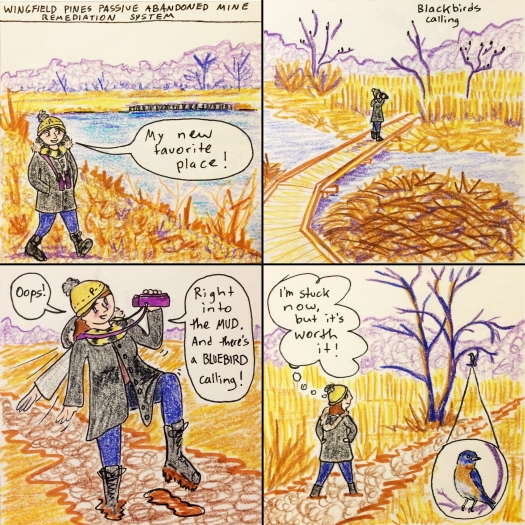
I find comics to be a very useful and compelling way of sharing my experiences – both what I can articulate verbally, and what I can’t. And through comics, I feel this intense connection to a lineage of scientific illustrators that, you could say, goes back to those very same cave paintings.
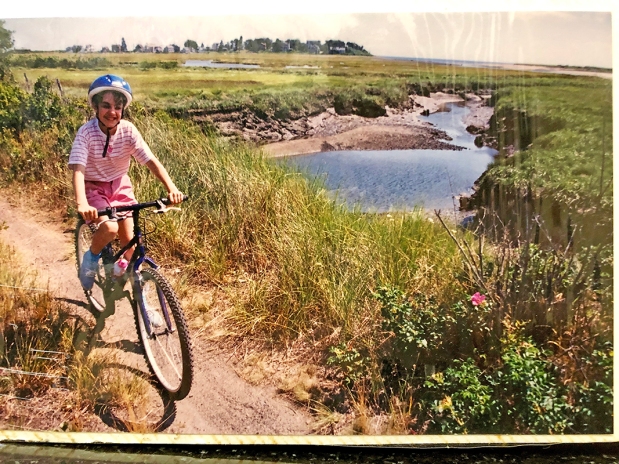
When I was a kid I wanted to be a naturalist-explorer. I read about the voyages of Captain James Cook and was enamored by the idea of him taking artists along on his expeditions, so that they might illustrate the plants and animals they discovered.
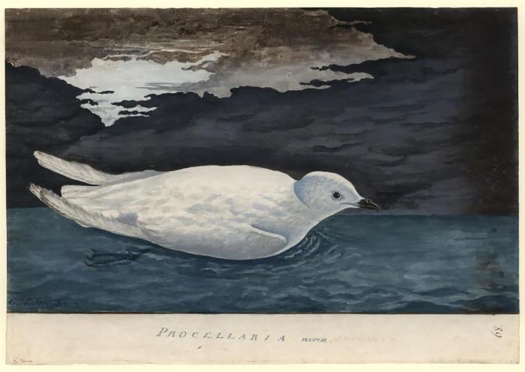
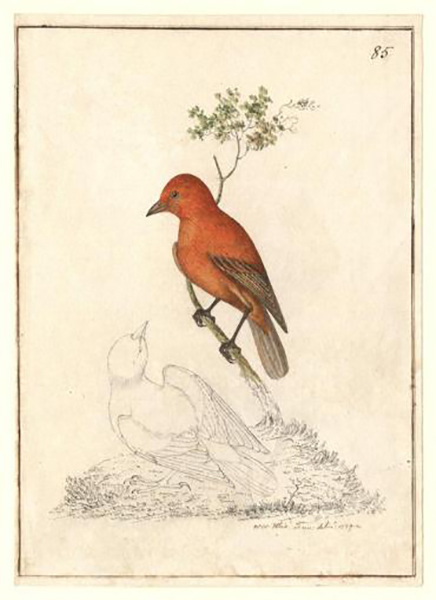
I often pretended to be on an expedition, striking out across my backyard and reaching the bit of woods on the other side. I would set up camp there, underneath a thorn bush, and observe the birds that came to my Dad’s feeders. I would try to ID all the plants and trees in the near vicinity, scribbling down notes and making drawings of leaves. If my sisters or one of the neighbor kids came around I would enlist their help in collecting samples.
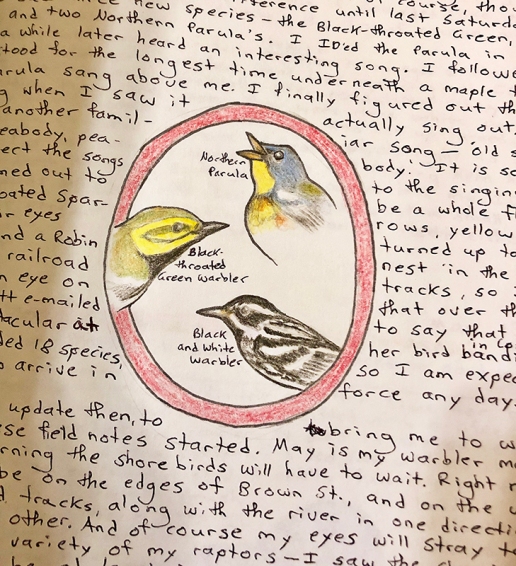
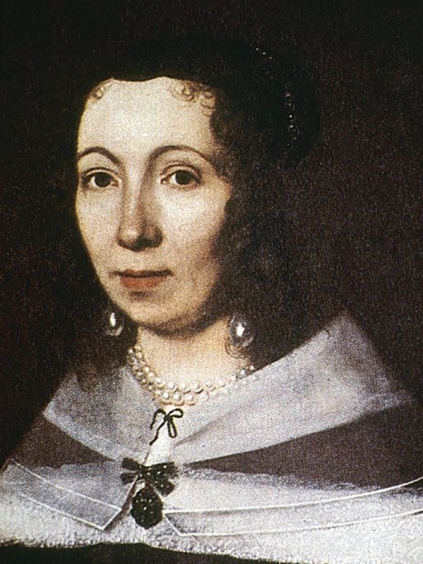
I wish I could tell my childhood self about Maria Sibylla Merian, who was the first European woman to go independently on a scientific exploration to South America. I would have been so inspired by her! She went to Dutch Surinam in 1699 to study and record tropical insects.
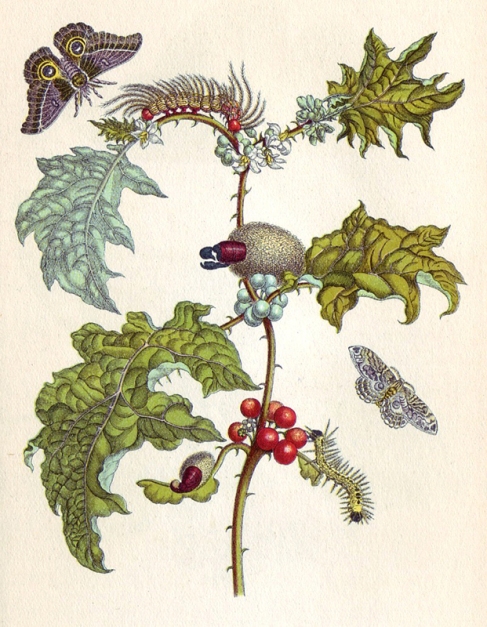
She was already a well-established scientific illustrator, who made a living off of her botanical illustrations. She was respected and influential, unlike dozens of other female naturalists that we know of.
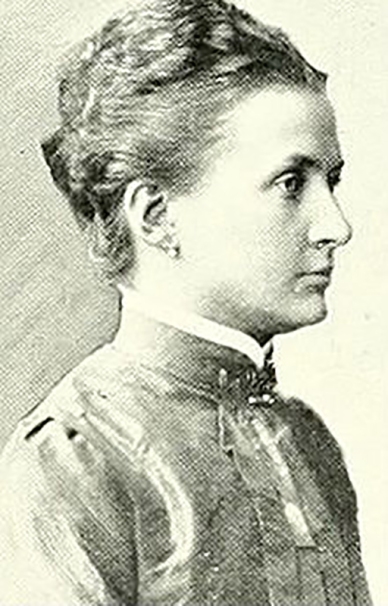
200 years later Princess Theresa of Bavaria went on an expedition to Brazil, and after nine years of analyzing her collection she published an illustrated travel journal of botanical, geological, and zoological information.
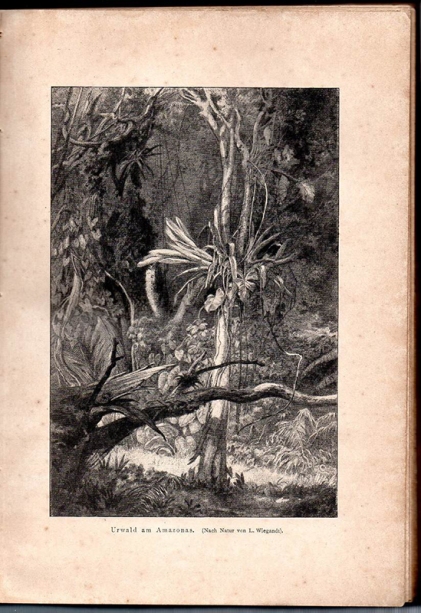
I was thinking about both of these women when I was in Costa Rica last December. And just like my childhood self, I was scribbling notes and drawing leaves, but my format had changed from nature journal…to comic strip.
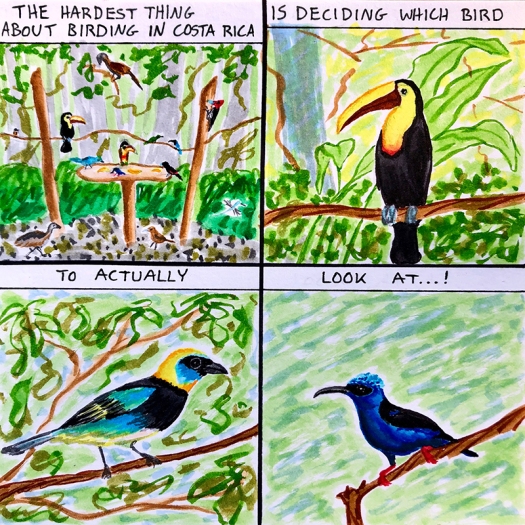
Art is a visual tool for communication. Comics, as I have said, are a particularly good way of using art to communicate. I kind of thought, growing up, that I would make scientific or naturalist illustrations, but instead, I find myself making comics (and being a naturalist-explorer too, amazingly!)

Science has always relied on a visual element to convey data or research to a wider audience. Scientific or naturalist illustration, infographics, and more recently photographs are all part of the visual language that science uses to educate.
Our brains absorb more data, way more quickly, from seeing an image than from reading text. We’re pretty much hardwired to get data more easily from images. Something like 50% of our brain is dedicated to visual processing, and around 70% of our sensory receptors are in our eyes. We process images 60,000 times faster than text.

Before the development of photography, illustration was how science was visualized. Although photography is a powerful tool, it does not eliminate the need for scientific – or naturalist – illustration. You need all of the above – and, I can argue, comics too.
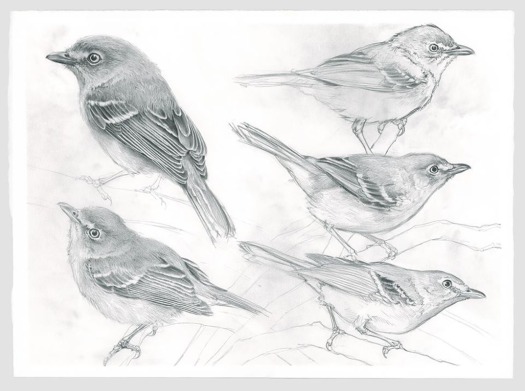
Naturalist illustration is closer to realism (and thus to photography in a way) than scientific illustration. Naturalist illustration is based on direct observation, whereas scientific illustration is based on study and documentation of the represented elements. The first is pretty subjective, while the second aims to be objective. However, a scientific illustration describes a reality that is both truthful and fictitious, because it often summarizes or generalizes the subject, aiming for the most accurate representation. In a way, scientific illustration is a form of storytelling.
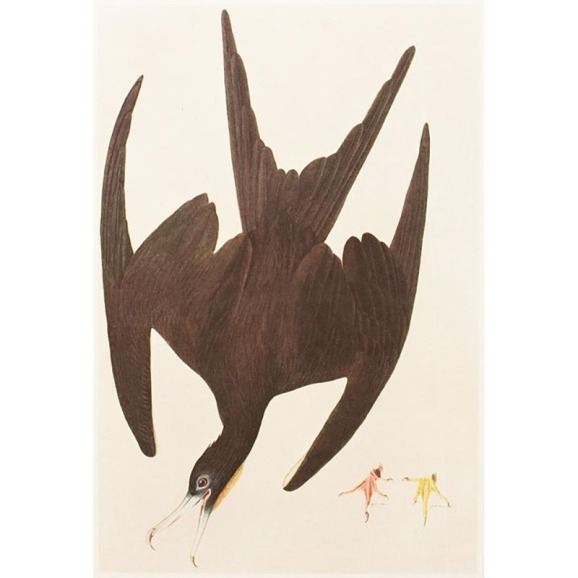
You can’t swap out a photograph for a scientific illustration, because a photograph can only capture one unique specimen. A good scientific illustration seeks to accurately, objectively, and generally represent ALL individuals of a species.
You see this in field guides – some use scientific illustrations to represent bird species, and some use photographs. With the illustration you see what the bird objectively and generally looks like – with the photograph you see what a specific individual looks like.
Illustration, too, has the power to combine multiple facts about an organism into one striking image, providing a compact way to communicate lots of information at once. Take one of Genevieve Jones’ images (she’s called “the other Audubon”).
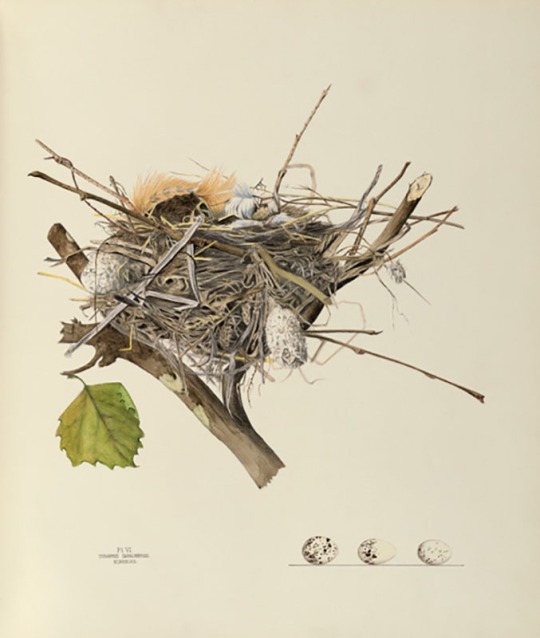
This depicts the nest and eggs of an Eastern Kindgbird. Very quickly you get an understanding of the shape of the nest, what it’s made of (dried grasses, sticks, seed pods, flowerheads, sticks, and lined with feathers), and can assume that it was built in a sycamore tree.
I love this kind of image, and other scientific illustrations like the work of Mary Banning…


…or Beatrix Potter, who were both brilliant mycologists, although they were not recognized as such in their lifetimes (after all, in the mid-1800s botany was considered an ideal pastime or hobby for women, but any actual scientific contributions, however substantial, were largely ignored.)
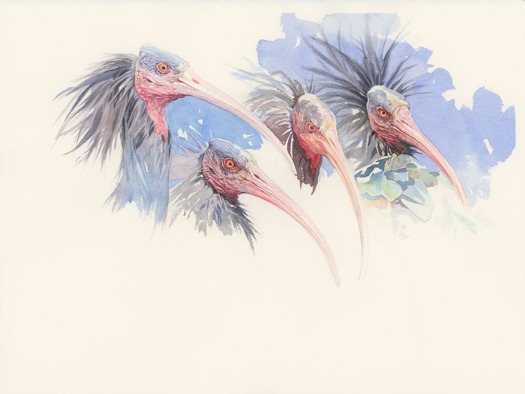
On the other hand, work like Catherine Hamilton‘s – this type of observational drawing, or field sketching, worked up into a naturalist illustration – is really exciting in a whole different way.
Observational drawing is a completely different experience, especially for the artist. You are having a conversation with yourself and the world around you as you do it. The eye looks and sees an object in the world, and the mind asks “What do I see?” and then it imagines what it is seeing, and visualizes how it would represent that on paper, and then the hand draws what the mind imagines it sees. What a process!
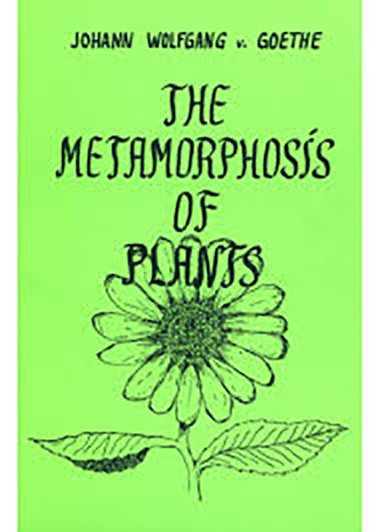
You could call this process “exact sensorial imagination”, which is an idea I got from Henri Bortoft, who got it from Goethe. They’re talking about a slightly different way of seeing, a way of developing the imagination as an organ of perception. It’s the idea of slowing down and really looking. You look at the shape of a leaf, and then you create the shape of the leaf in your mind, using your imagination. It’s an active way of seeing – but you can take it that step further by actually drawing this phenomenon going on inside your head, drawing the conversation your mind is having with what it sees, drawing the leaf. (Goethe IS often quoted saying something like “you never really see a plant until you draw it”.)
I like this idea of active seeing as it applies to drawing, but also to general observational practice. Birding is already an activity that moves your body, lifts your eyes UP and outside of yourself. You’re more aware, disconnected from some aspects of life and far more connected to others. Like I said before, you’re learning to trust your senses.
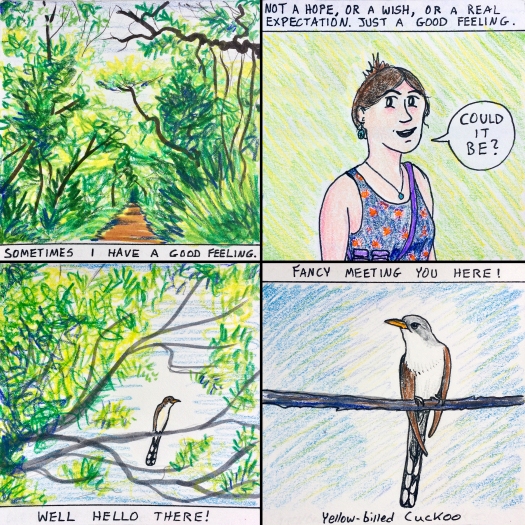
Maybe you add nature journaling or field sketching to your birding and outdoor experiences? Aside from aiding the development of your imagination as an organ of perception, ah la Goethe, studies have proven that seeing and doing is essential for learning and recall. People recall 20% of what they read, 10% of what they see, and 80% of what they see AND do. So drawing will help you become a better birder, but also this active way of looking, and the slow way of doing it, I think will help you become a better person.
There’s this phrase that is popular in social media memes and such – “I can’t unsee THAT!” or “what has been seen can’t be unseen”. That’s what I hope to do with my comics, which are this accessible way to communicate what it’s like to go birding and play outside. I am trying to share what I see, and inspire folks to take a look for themselves. Once they start looking, in theory what has been seen can’t be unseen, and if more folks see that birds are amazing and the environment is important, that’s a good thing.
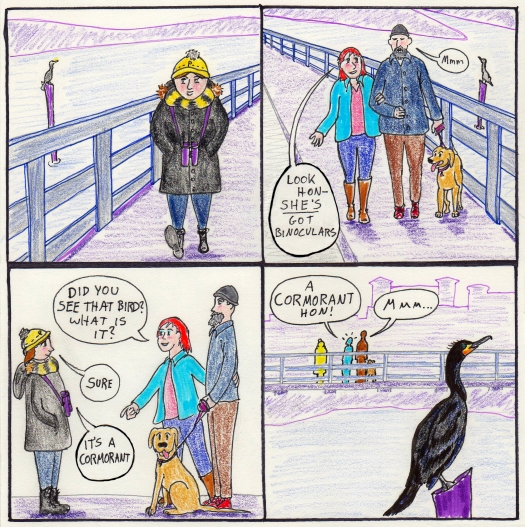
Relationships are important to me, as a naturalist and a cartoonist and storyteller, and as a human being. There’s a spot in Pittsburgh, PA, called Duck Hollow, where somehow all of this comes together for me. It’s where folks come to fish, where teenagers come to chill out, and where local birders come to bird. Everyone sort of does their own thing, but there’s a nice comradery. The guys who were fishing will ask me about birds occasionally, and tell me stories about their encounters with fish-stealing Bald Eagles, and I’ll ask them about those fish with the crazy long thin snouts and all the teeth that I can’t believe are there in the Monongahela River.
Sometimes there will be something that pulls everyone’s attention to the same spot.
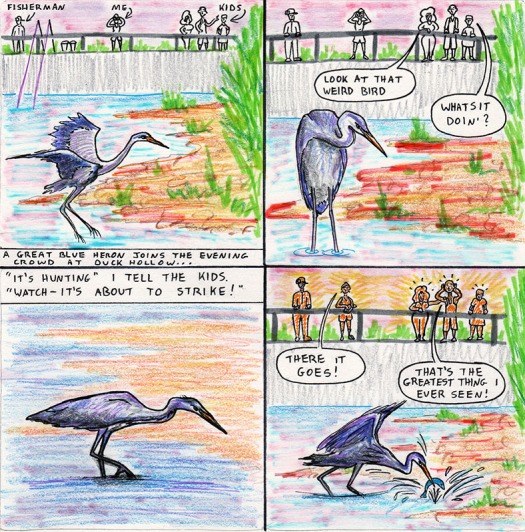
Moments like these – these shared, all senses engaged, experiences – are powerful. They reverberate, somehow. They are a conversation that continues. They are why I can’t despair, why I have to keep striving to understand myself and my place in this world, why I have to keep exploring the connections and relationships between people and birds and the environment.
Through experiences, through stories, and through comics.
(And here are a few more of my comics, for good measure and viewing pleasure!)
